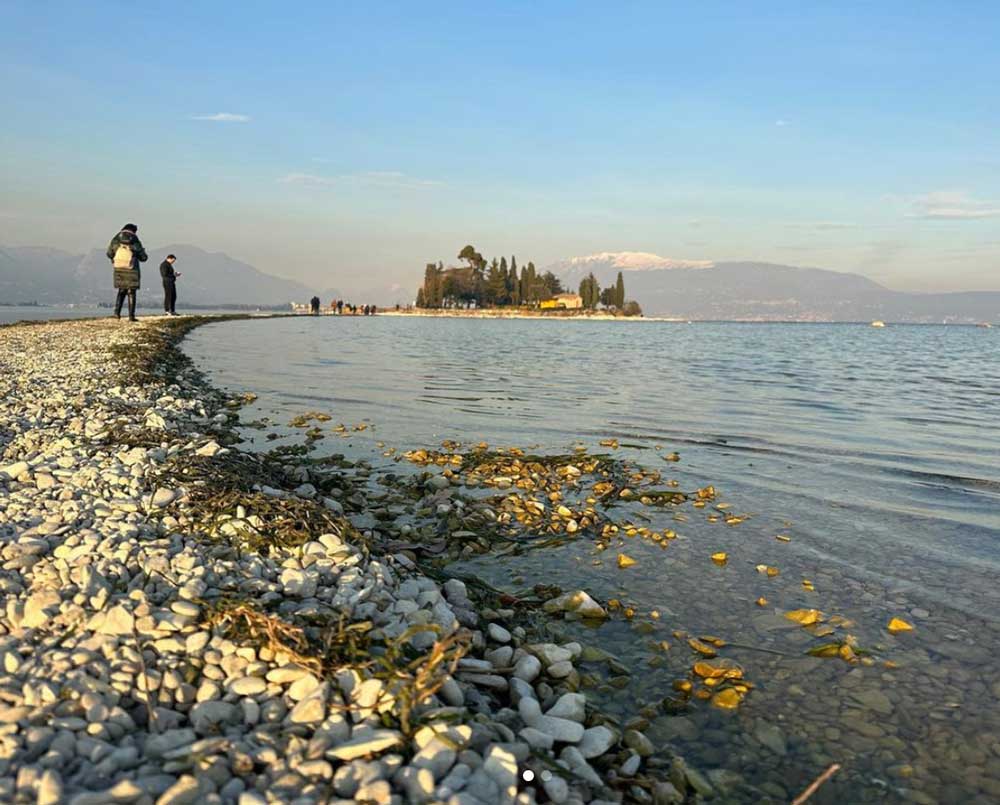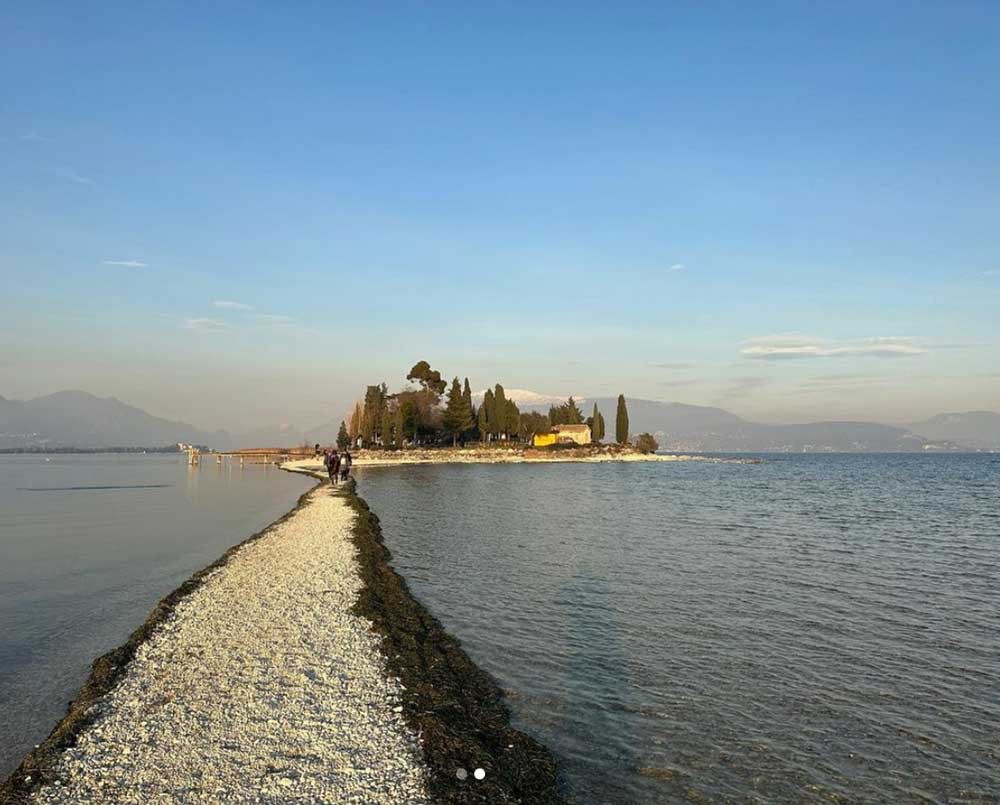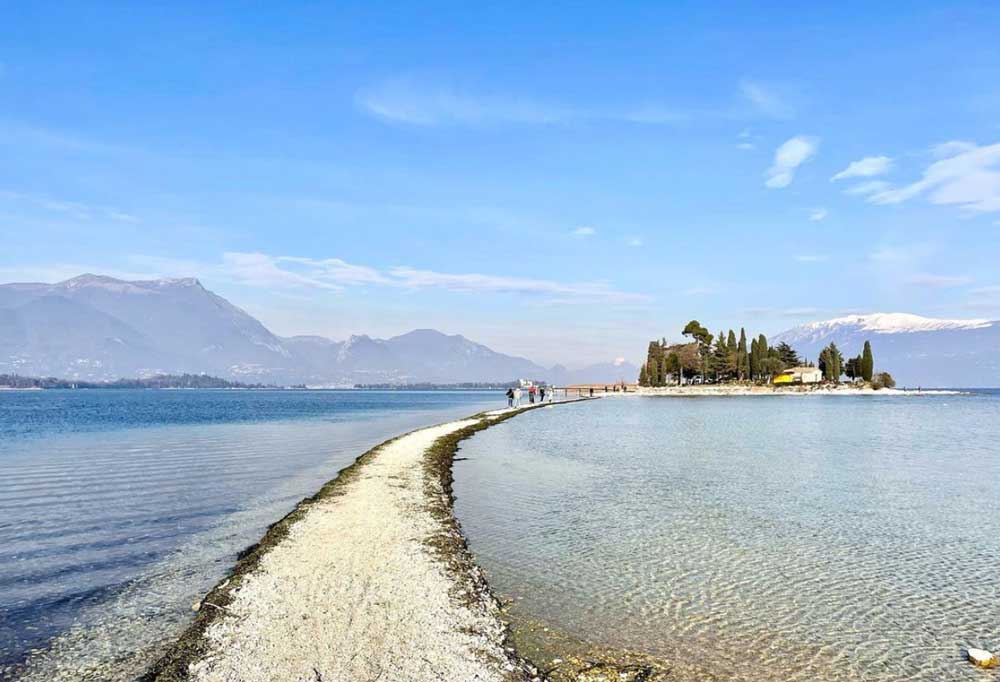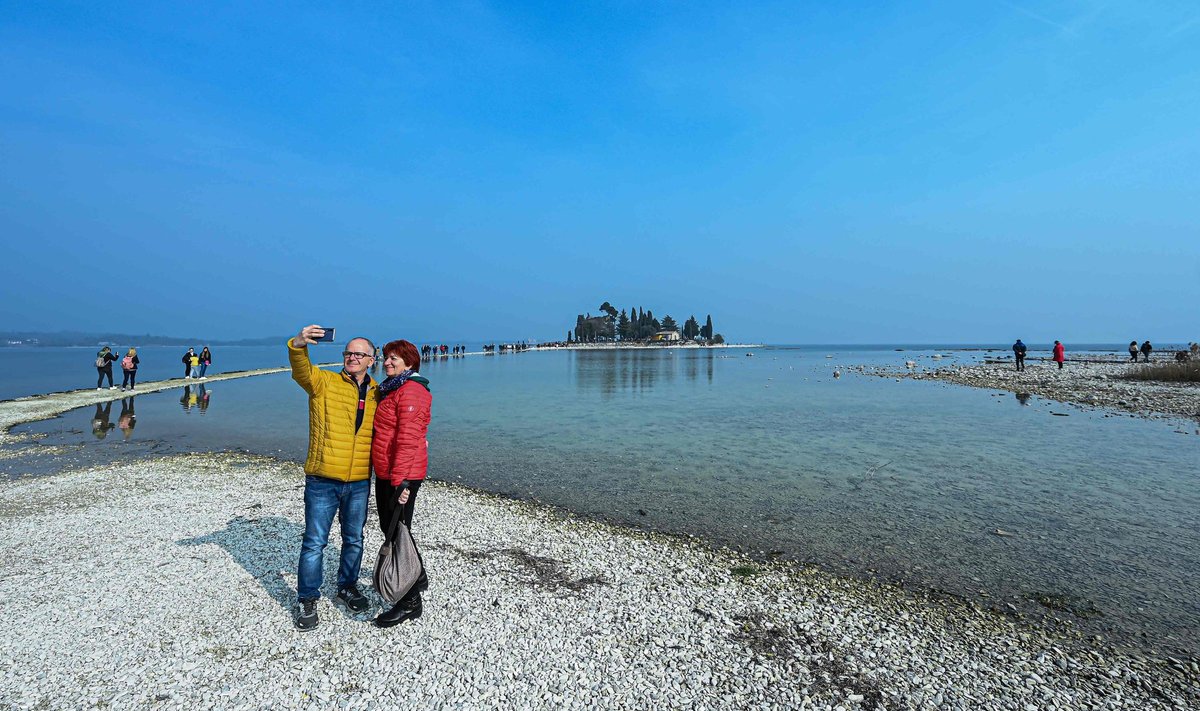The famous Italian Lake Garda has again become a place of pilgrimage for tourists. The reason is an arid winter, due to which the water level in the lake has dramatically decreased, and an embanked road from the shore to the tiny island of San Biagio, located in the middle of the lake, has become visible.
Normally, the island can only be reached by boat, but historically low water levels have exposed a narrow path of rock and sand that connects it to the shore.

“It is a beautiful, but at the same time sad sight, because it is associated with the winter drought. We hope this will be short-lived,” Alberto Pampuri, a 62-year-old pensioner who arrived at the site on a bike with his wife and friends, told Euronews.
This unusual phenomenon reminds some visitors of “Floating Piers”, a 2016 art installation by artist Christo on another Italian lake, Iseo. Christo erected several footbridges across the lake.
“But these were artificial pontoons, and here is a real work of art!” says enthusiastically Agatha Cartery, a 48-year-old teacher.

Why is the water level in Lake Garda so low?
An abnormally dry winter has caused the water level in Lake Garda to reach its lowest winter level in more than 30 years. The water level in the lake is about 65 cm below the average for this time of year. The waters of the Po River and lakes Maggiore and Como are also exceptionally low.
Usually, the lake is filled with melted snow from the surrounding peaks, but this winter there was very little snow or rain in this region.

How will the drought affect tourism in Lake Garda?
Five years ago, Matteo Fiori crossed the Gulf of Manerba del Garda on foot and reached the island of San Biagio, lifting his backpack over his head to protect him from the waves. “The water was chest deep, it was an adventure,” said a 45-year-old social worker who came to admire the new path to the island.
The influx of tourists, unexpected for February, has been a boon for the small town of Manerba del Garda. “The island has become an attraction out of season, which makes our lake more famous,” says Mayor Flaviano Mattiotti.

But the drought could bring problems for the city in the future, he also warns. “If the lake level does not rise in the spring, we will have to dredge the harbors to make it easier for tourist boats,” he said.
About 28 million tourists visited Lake Garda last year, about 40 percent from Germany, Austria, or Switzerland. “It’s like walking on water,” says Afra Vorhauser, a tourist from South Tyrol. “As soon as I saw a report about the island on German television news, I decided to come.”
On San Biagio, also known as “Rabbit Island”, families picnic on the grass in the beautiful winter sun or stroll along the deserted beaches. Children climb rocks and throw “pancakes” into the water.
“In winter, there is a new tourist movement to discover those areas of the lake that are usually underwater,” says Paolo Artelio, president of VisitGarda, the agency that promotes Lake Garda. Tourists can see the partially water-covered Caves of Catullus, the remains of a Roman villa at the tip of the Sirmione peninsula.
But local authorities insist that most of the typical lakeside attractions are still accessible – and that it’s “premature to cry about a disaster.”
“Nothing changes for tourists, because the average depth of the lake is still 136 meters, they can surf, sail or just swim,” says Pierlucio Cereza, general secretary of Comunità del Garda, a local water quality organization.
“All it takes is the end of February with snow and a rainy March for the situation to normalize,” he adds.

